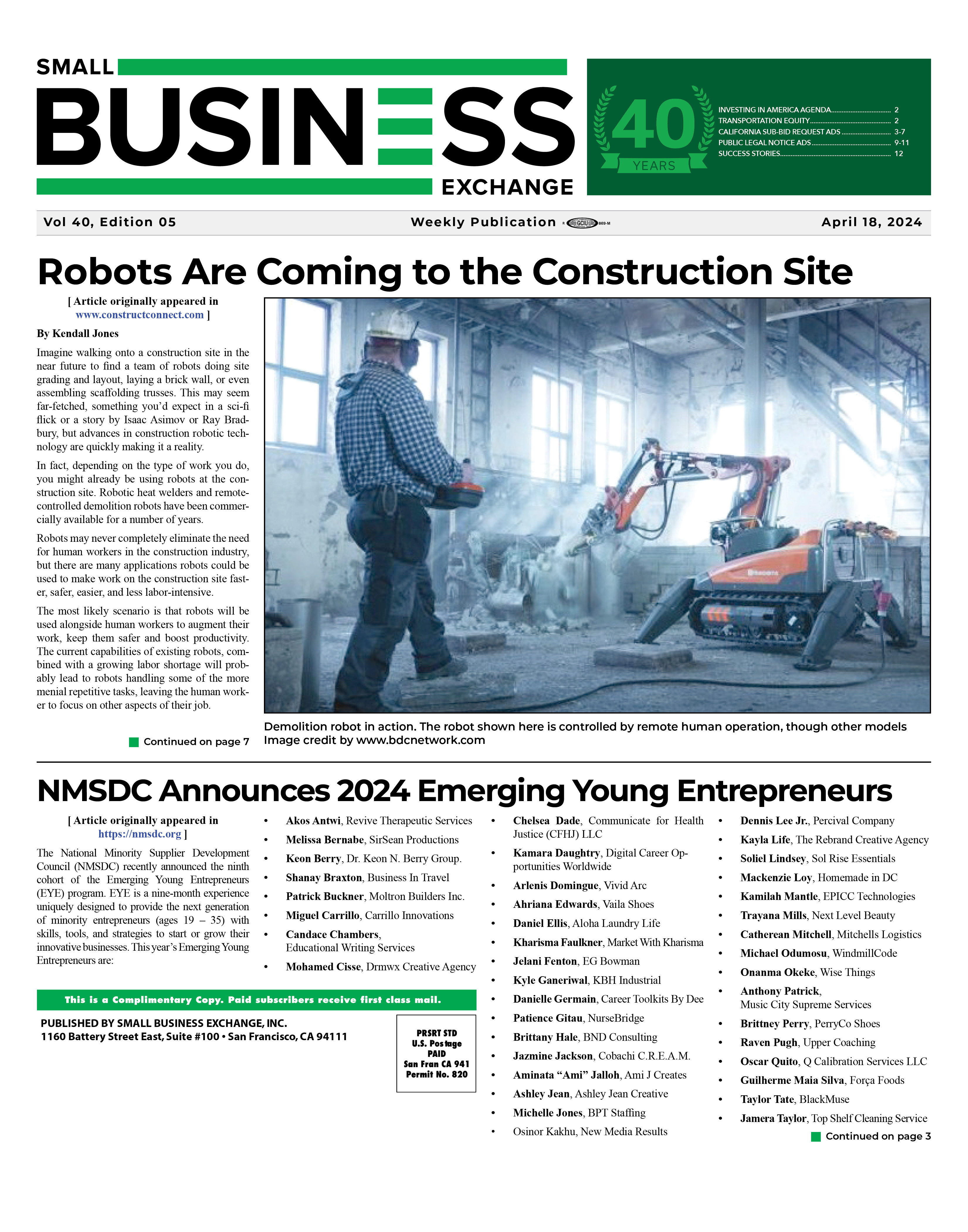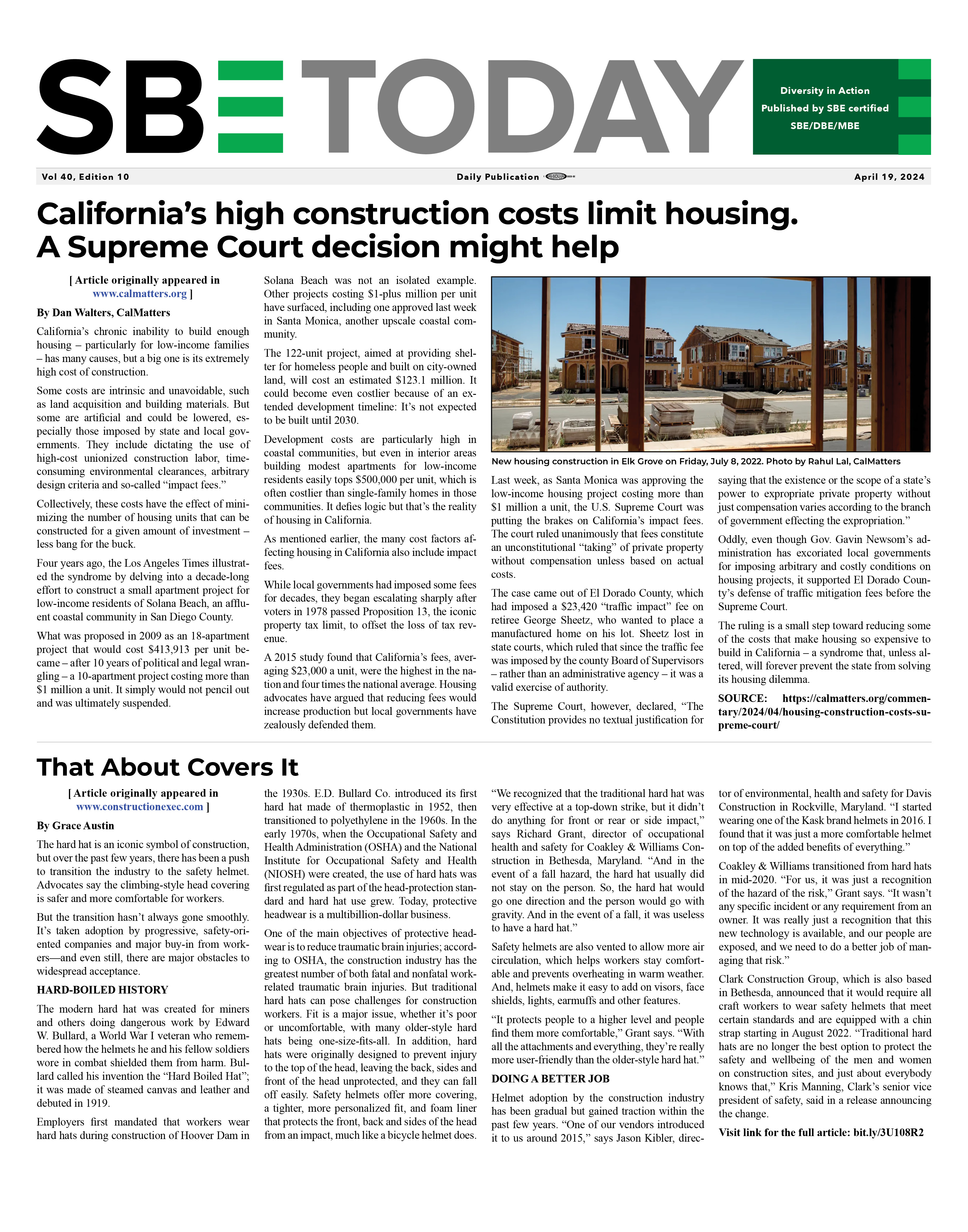|
|
The State of Latino Economic Well-Being in California
08/14/2019
[ ARTICLE WAS ORIGINALLY POSTED ON http://www.californialei.org/middleclass ] As the largest racial or ethnic group in California, the economic well-being of Latinos will play a critical role in the long-term economic success of the state. Latinos continue to experience much lower economic well-being in the state than California’s population as a whole. In order to thrive, the Latino community needs carefully allocated resources and investments designed to build economic well-being, including a strong Latino middle class. To develop effective economic policies, it is important to first understand the barriers and opportunities that Latinos currently face. California’s leaders and policymakers require comprehensive information about the needs and opportunities facing Latinos across the state to help ensure that strategic decisions regarding business, investment, urban planning, education, and other critical areas take into account the varying conditions faced by Latino communities. Study Highlights - The Bay Area experiences the highest median household incomes of all California regions, but also the greatest disparities in income between Latinos and Asian Americans. - The gender gap in poverty rates is highest for Latinos. The Latina poverty rate is 22.4%, compared to 18.8% for Latino males. - Nearly 60% of Latino households lack adequate housing compared with 38.4% of non-Latino White households. - More than half of Latino renters and one-third of Latino homeowners are paying more than 30% of their income on housing costs. - 13% of Latinos have a 4-year college degree or higher, 39.5 percentage points below the degree attainment of Asian Americans. - Latinas are achieving higher education at higher rates than male Latinos. - Nearly 12% of the state’s employed population is employed in STEM, while 4.7% of employed Latinos work in STEM.
- Latino-owned businesses make up nearly one-quarter of all firms in California, and account for 6.5% of total receipts and sales in the state. In this report, we provide an up-to-date overview of the current economic conditions for Latinos, focused on the four key relating factors of income distribution, education, housing and entrepreneurship. In this report, we provide an up-to-date overview of the current economic conditions for Latinos, focused on the four key relating factors of income distribution, education, housing and entrepreneurship. The report establishes a baseline of data that can be used to measure Latino economic progress over time. We also introduce the Latino Economic Index (LEI) that provides a visual data snapshot of Latino economic well-being at the regional and community level in California. With this index, we explore geographic hot spots of opportunity and identify areas that call for the most urgent investment and policy outcomes. From the study’s findings, it is clear that California Latinos have made large gains over the last decade in many indicators linked to economic well-being: decreases in poverty rates; increases in college enrollment, high school graduation rates and the percentage of UC/CSU eligible; as well as substantial growth in entrepreneurship. Latinas, in particular, have experienced significant achievements in higher education and business. Although improving, Latino economic health in the state, comparatively, is not strong. On every measure examined in this study, outcomes for Latinos are below those of the general population, and far below those of non-Latino Whites and Asian Americans. Latinos are overrepresented in lower-income groups, while also underrepresented among California’s highest-earning households. Latino poverty rates remain high despite seeing the largest decrease of any racial or ethnic group over the past decade. Even with significant gains in educational attainment, the Latino dropout rate remains high. There is still much work to be done to ensure higher college enrollment and that Latinos enrolled in college have the resources to finish in order to share in a middle-class lifestyle that is often associated with being a college graduate. Homeownership remains desirable for Latinos, as it does for the rest of the population, but this study’s findings suggest that solutions aimed at increasing Latino homeownership alone are not sufficient. The state’s large, cost-burdened Latino renter population cannot achieve the savings and financial stability necessary for homeownership without access to affordable rental housing. While Latino business owners represent a significant share of California’s entrepreneurs, Latino firms are greatly underrepresented in the state’s annual receipts and sales. In order to support the improved economic well-being of Latinos, including an expanded middle class, it is crucial to help Latino business owners connect to the financial services they need and to address banking practices that disproportionally disadvantage Latinos. Latinos continue to face significant structural challenges in housing, educational attainment and entrepreneurial efforts that, together, serve as barriers to higher income and overall economic stability. California’s current policies are failing the Latino middle class and by extension, the state’s long-term economic prosperity. Meaningful action toward expanding the Latino middle class in California must address the structural and institutional barriers that reproduce disparities in education, housing and entrepreneur outcomes for Latinos in the state. In developing effective strategies and policies to promote economic growth, policy makers should consider both regional patterns of disparity and address community level “hot spots” identified by the Latino Economic Index. We submit the findings from this study will establish a baseline of data that can be used by policy makers and community leaders to measure Latino economic progress in California over time. About the Study
This study was funded by the California Latino Economic Institute. Dr. Mindy S. Romero, the study’s lead researcher, is founder and director of the California Civic Engagement Project (CCEP) at the University of Southern California Price School of Public Policy. Dr. Romero is a political sociologist and faculty at the USC Price School. Her research explores barriers to civic and political engagement, and their implications for the economic and social wellbeing of underrepresented and underserved groups. Dr. Romero is frequently invited to share her research findings in academic and policy venues throughout the U.S., including the California State Legislature and the U.S. Congress. She is a member of the CLEI Academic Advisory Board. Back To News |
|




